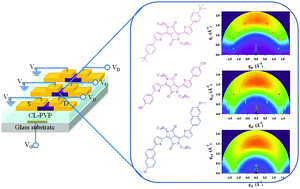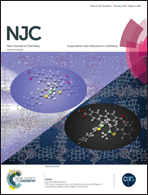Facile synthesis of arylthiophenyl-functionalized diketopyrrolopyrrole derivatives via direct C–H arylation: characterization and utilization in organic electronic devices†
Abstract
A series of symmetrically arylthiophenyl-functionalized diketopyrrolopyrrole (DPP) derivatives were synthesized via palladium-catalyzed direct C–H arylation to develop an active material for organic electronic devices. The properties of DPPs could be tuned by simple variation of the end groups such as t-butylphenyl, cyanophenyl and methoxynaphthyl. The effect of the substituent on the optical, electrochemical, and thermal properties of DPPs was evaluated using UV-visible spectroscopy, cyclic voltammetry, and thermogravimetric analysis. The morphology and molecular packing of thin-films of DPPs were analyzed by atomic force microscopy (AFM), density functional theory (DFT) calculations, and two-dimensional grazing incidence X-ray diffraction (2D-GIXD) experiments. Utilization of the synthesized DPPs as channel materials in organic field-effect transistors was demonstrated.


 Please wait while we load your content...
Please wait while we load your content...